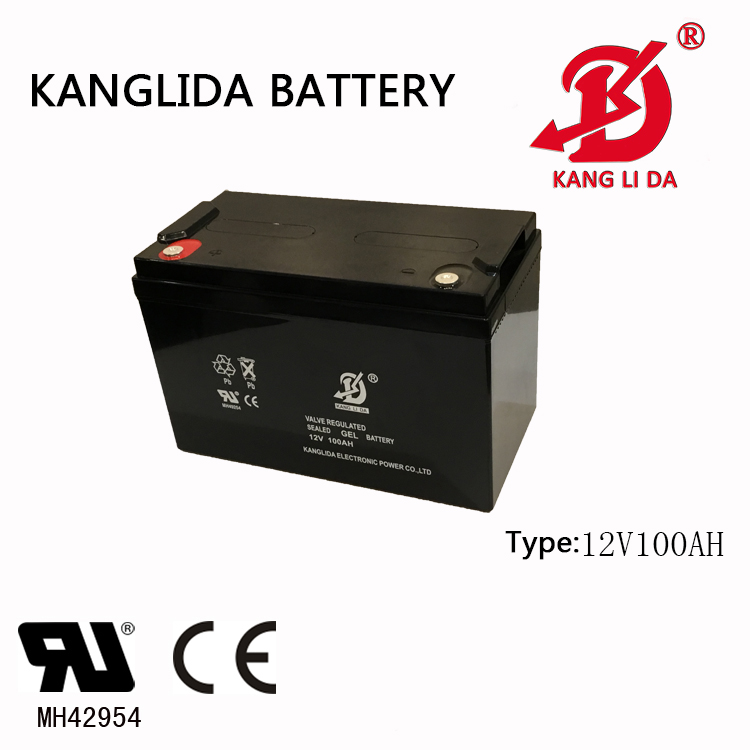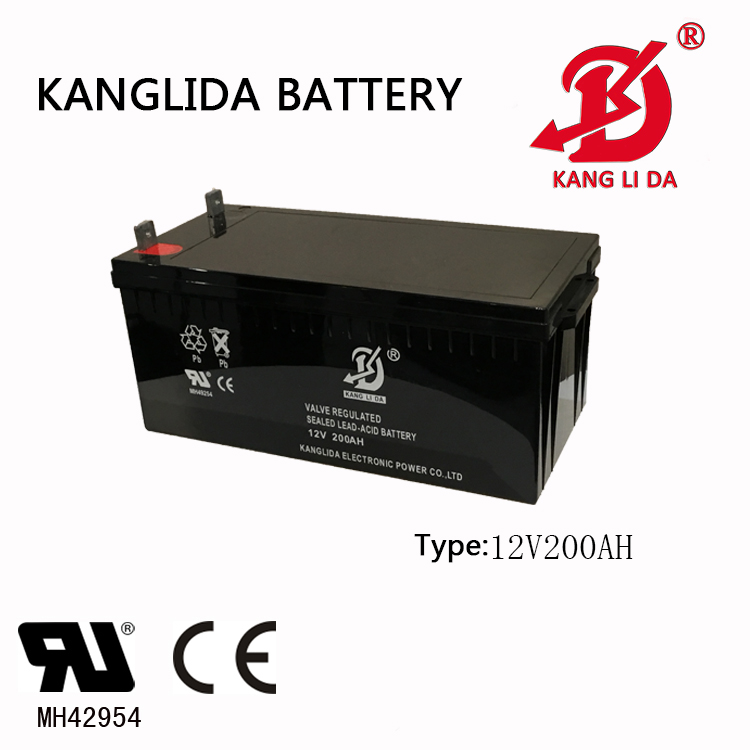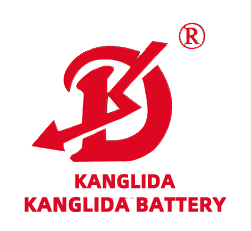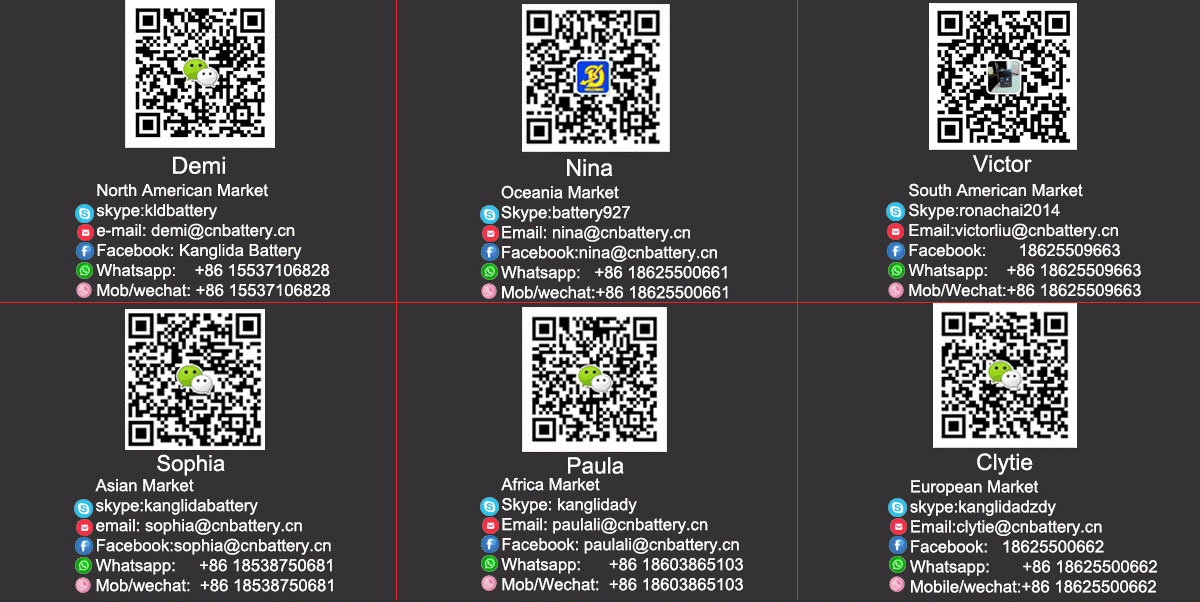Maintenance-free lead-acid battery detailed --- kanglida battery
Maintenance-free batteries, as the name suggests, are the most maintenance-free. Compared with the lead-acid battery, the consumption of the electrolyte is very small, and it is basically unnecessary to supplement the distilled water during the service life. It also has the characteristics of shock resistance, high temperature resistance, small size and small self-discharge. Of course, its price will be more expensive than lead-acid batteries. As for the service life, the recommended replacement period for maintenance-free batteries under normal conditions is about 3 years, which is equivalent to lead-acid batteries. In order to avoid daily maintenance and maintenance, the design of the exhaust system is significantly different from that of the lead-acid battery, so theoretically it is not necessary to add distilled water or electrolyte frequently. In addition, the maintenance-free battery housings are generally enclosed, and unless they have specialized tools and techniques, they are generally not self-serviced. Although the maintenance-free battery is called "maintenance-free", it is not completely disposable. It is generally recommended to check the battery every 30,000 kilometers and carry out maintenance every 80,000 kilometers. However, there are very few 4S shops or repair shops that can perform this operation, and the service life of the maintenance-free battery is relatively fixed. Under normal use, it will be replaced in 2-3 years, and there is nothing to extend its use. The way of life. The sealed maintenance-free battery adopts the newly designed fully sealed structure and modern production process in the 1990s. It provides high performance, long life, pollution-free, maintenance-free, safe and reliable performance.

The batteries commonly used in maintenance-free lead-acid batteries are mainly divided into three categories, namely ordinary batteries, dry-charge batteries and maintenance-free batteries. 1) Ordinary battery; the plate of an ordinary battery is composed of oxides of lead and lead, and the electrolyte is an aqueous solution of sulfuric acid. Its main advantage is that the voltage is stable and the price is cheap; the disadvantage is that the specific energy is low (that is, the energy stored per kilogram of the battery), the service life is short, and the daily maintenance is frequent. 2) Dry-charged battery: Its full name is dry-charged lead-acid battery. Its main feature is that the negative plate has high storage capacity. In the completely dry state, it can save the obtained power within two years. When you just need to add the electrolyte, wait 20-30 minutes to use. 3) Maintenance-free battery: Maintenance-free battery due to its structural advantages, the consumption of electrolyte is very small. The service life is generally twice that of a normal battery. There are also two kinds of maintenance-free batteries on the market: the first one does not require maintenance (adding replenishing liquid) after the one-time addition of electrolyte at the time of purchase; the other is that the battery itself has been charged with electrolyte and sealed. The user cannot add replenishing liquid at all. Edit the structure of the battery This general battery lead-acid battery is composed of positive and negative plates, separators, shells, electrolyte and wiring pile heads. The chemical reaction of the discharge depends on the active material of the positive electrode (lead dioxide and lead). And the active material of the negative electrode plate (sponge-like pure lead) is carried out under the action of an electrolyte (dilute sulfuric acid solution), wherein the grid of the plate, the conventional battery is made of lead-bismuth alloy, and the maintenance-free battery is made of lead-calcium alloy. The former uses sputum and the latter uses calcium, which is the fundamental difference between the two. Different materials will produce different phenomena: the traditional battery will reduce the liquid during use, because the flaw on the grid will contaminate the sponge-like pure lead on the negative plate, which will reduce the reverse of the battery after full charge. The electromotive force causes excessive decomposition of water, and a large amount of oxygen and hydrogen escape from the positive and negative plates, respectively, and the electrolyte is reduced. By replacing the strontium with calcium, it is possible to change the back electromotive force of the fully charged battery, reduce the overcharge current, and reduce the liquid vaporization speed, thereby reducing the electrolyte loss. Since the maintenance-free battery adopts a lead-calcium alloy grid, the amount of water decomposition generated during charging is small, the evaporation of water is low, and the sealed structure of the outer casing is used, and the sulfuric acid gas released is also small, so that compared with the conventional battery, It has the advantages of no need to add any liquid, less corrosion to the wiring pile head and wire, strong anti-overcharge ability, large starting current and long storage time.

Maintenance-free lead-acid battery maintenance-free battery, because of its normal charging voltage, the electrolyte only produces a small amount of gas, the plate has strong anti-overcharge capability, and has small internal resistance, low temperature starting performance, and is better than conventional battery. It has long life and so on, so it is not necessary to add distilled water during the whole use period. Under normal conditions of charging system, it is not necessary to carry out supplementary charging from the removal. However, the specific gravity of the electrolyte should be checked during maintenance. Most maintenance-free batteries have a hole-shaped liquid (temperature-compensated) hydrometer on the cover that changes color depending on the specific gravity of the electrolyte. It can indicate the storage state of the battery and the height of the electrolyte level. When the indicator eye of the hydrometer is green, it indicates that the charging is sufficient, the battery is normal; when the indicator eye green point is little or black, it indicates that the battery needs to be charged; when the indicator eye shows light yellow, it indicates that the battery is faulty inside and needs to be repaired or Replace it. The maintenance-free battery can also be supplementally charged, and the charging method is basically the same as that of the ordinary battery. The voltage per cell should be limited to 2.3-2.4V during charging. Note that charging with a normal charging method consumes more water, and the charging current should be slightly smaller (less than 5A) during charging. Fast charging is not possible, otherwise the battery may explode, causing injury. When the hydrometer of the maintenance-free battery is displayed in light yellow or red, it indicates that the battery is near scrapped, even if it is recharged, the service life is not long. Charging at this time can only be used as an expedient measure for emergency. When conditions permit, the maintenance-free battery can be charged with a charging device with current-voltage characteristics. The device ensures sufficient power and avoids overcharging and consumes more water.

Zhengzhou Kanglida Electronic Power Co., Ltd. was established in 2000, specializing in the development, production and sales of 2V, 4V, 6V, 12V four series of maintenance-free lead-acid batteries, gel batteries and their electronic chargers. The main products are anti-theft alarm battery, fire alarm lead-acid battery, building intercom storage battery, community intelligent battery, attendance machine 6V battery, elevator leveling system 12V battery, elevator lighting maintenance-free battery, elevator intercom small battery, emergency light Lead-acid battery, children's electric car battery, cartoon gas model 12V battery, electronic scale 4V battery, parking lock battery, strobe light lead-acid maintenance-free battery, yellow flash light storage battery, solar photovoltaic cell, solar street lamp colloid battery, car wash Battery, automatic car battery, electric sprayer lead-acid battery, rotating table battery, rotating light box battery, sweeper battery, washing electromechanical bottle, UPS EPS system backup battery, etc.
Message





